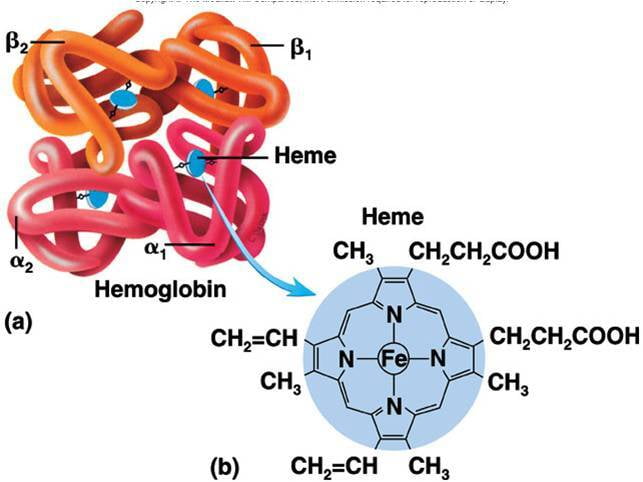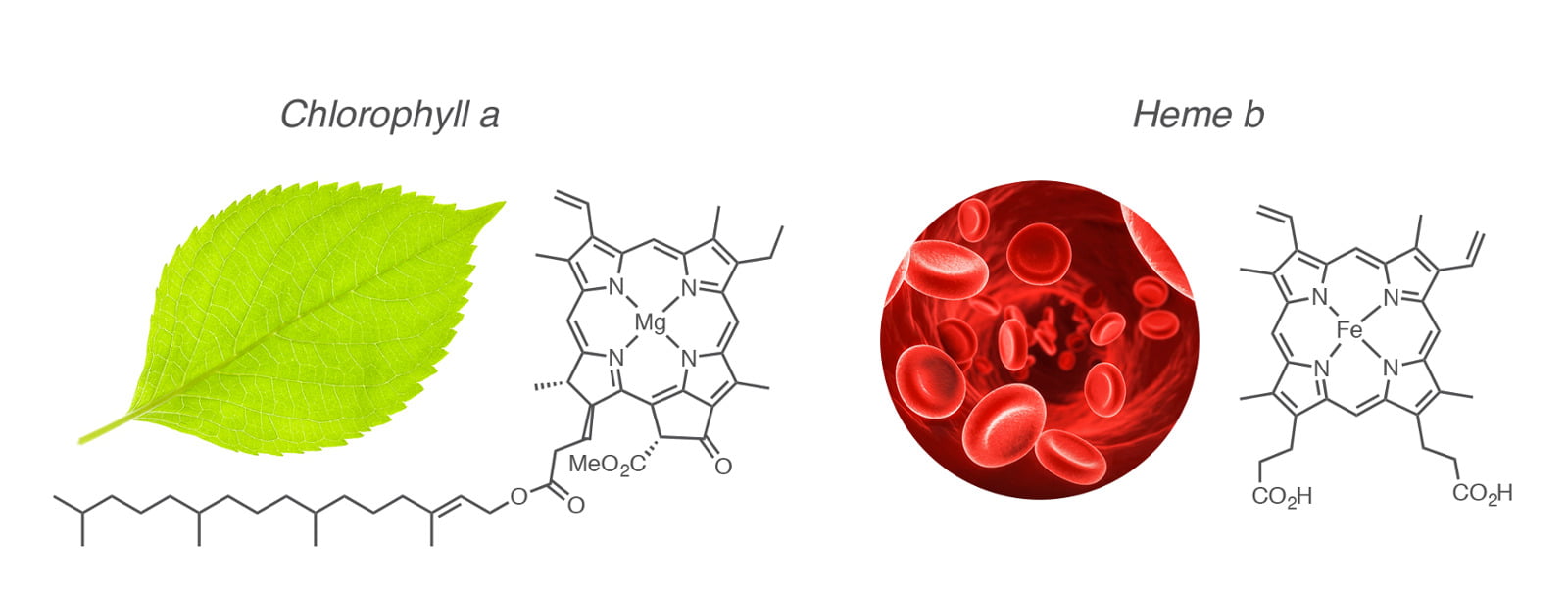(preprint) COVID-19:Attacks the 1-Beta Chain of Hemoglobin and Captures the Porphyrin to Inhibit Human Heme Metabolism (pdf)
From the abstract: . . ."The results showed the ORF8 and surface glycoprotein could bind to the porphyrin, respectively.At the same time, orf1ab, ORF10, and ORF3a proteins could coordinate attack the heme on the 1-beta chain of hemoglobin to dissociate the iron to form the porphyrin. The attack will cause less and less hemoglobin that can carry oxygen and carbon dioxide. The lung cells have extremely intense poisoning and inflammatory due to the inability to exchange carbon dioxide and oxygen frequently, which eventually results in ground-glass-like lung images.". . .
This paper reports that the ground-glass inflammatory process in the lungs could be caused by heme unbinding, which I'll try to explain briefly below. The did this "study" by computer simulation. This is a theoretical possiblity of a virulence factor that COV2 might posses. The paper also gives mention to another action of Chloroquine that is helpful: it stops the virus from doing it! (We also know that Chloroquine is very effective at helping Zinc into the cell, and Zinc stops viral replication.) The article also mentions Favipiravir, an experimental drug that is also effective at blocking Cov2 from unbinding heme. I only want to mention that these drugs are not without their own risks.

Hemoglobin is a protein with four parts, each of which will bind one iron-containing heme. Cov2 can break this connection to the B1 part, leaving Iron unbound, and Heme useless to be broken-down into bilirubin and excreted. Meanwhile what Iron is not caught by Ferritin is scavenged by bacteria or is free to cause oxidation. (picture how fast unprotected iron will rust!)
My attempt at a short explanation:
Their postulate: Along the course of the illness, Cov2 will cause the Iron-containing molecule "heme" to become unbound from hemoglobin (the protein that should carry four heme molecules). The Iron in Heme is what safely carries oxygen from the lungs and carbon dioxide back to them.
The unbinding of heme by Cov2 results in a flood of "unbound iron" through the bloodstream and a cascade of events and symptoms including bacterial dysbiosis, iron-deficient anemia, and elevated ferritin and bilirubin levels.
Elevated ferritin levels are a laboratory finding. It usually indicates that an inflammatory process is occurring, and cytokines are the culprit. In other words, its most common that our own systems are creating the inflammation which disrupts heme. However, in Covid, the Cov2 virus itself is causing the heme disruption absent of any "cytokine storm."
Folks could have mild Covid symptoms yet still suffer this heme-iron loss.
WHAT WE ARE SEEING IN REAL-LIFE:
Two recent autopsies have shown microthrombi deep in the lungs. These are mini-blood clots. At the very least, on a local level in the lungs, we are seeing a type of intravascular coagulation. The autopsies do not show any coagulation throughout the body, mainly in the lungs, from what I understand.
HOW TO RECOGNIZE ANEMIA:
Acute symptoms of iron-deficiency include:
- arrhythmia,
- false-flushes (red warm face without a fever),
- cold extremities,
- pallor (paleness of the face and tongue),
- pain in the mouth and possible swelling of the tongue and gums,
- weakness,
- shortness of breath
- faintness/dizziness,
- restless legs. (and here),
- headaches,
- So you know to look for it: later signs include spooning of the fingernails with brittle nails and hair, craving for indigestible things like clay.
- Acute signs that heme is being spilled are dark stools and dark urine. What you're seeing is bilirubin. The liver and kidneys are also working overtime.
Some HIGH YIELD Holistic Interventions:
It obviously goes without saying that you'll want to find situation-appropriate food sources of Iron to replace what you've lost.
- Homeopathic Ferrum Phos - this homeopathic is made from Iron Phosphate and can often help with symptoms as described above from loss of heme iron. I have personally used this during my Cov2 fight, and have seen it work for others with similar presenting symptoms. Now we have a little understanding why!
- Lactoferrin / Colostrum : iron rich food with immunomodulatory benefits.
- Spirulina & Chlorella : Blue-Green Algaes that have very high concentrations of chlorophyll. It will not replace Iron, but will provide a stand-in molecule that we believe is a powerful antioxidant that balances cellular energy levels which results in lower blood sugar and increased cellular respiration. Chlorophyll molecules are nearly identical to Heme except that they contain Magnesium.
- Vitamin C : this vitamin increases dietary iron absorption in the stomach, and it usually my first suggestion to anyone with Iron deficiency. Have some vitamin C with every meal. Improves oxygenation and oxygen utilization.
- Digestive / Systemic Enzymes : especially Pepsin, enhances iron absorption. Digestive enzymes also can be supportive as immunomodulators.
- Yellowdock leaf and root, and Burdock root: commonly used as herbal Iron sources. Dandelion greens and root are mineral rich and also known for abundant potassium.
- Digestive and Systemic Enzymes: stabilize platelets.
John Brisson gives a lengthy heme-unbinding explanation during the course of this interview:
Brisson is an expert in ventilatory therapy and also an expert in gut health. I've had the good fortune to get to know him, and value his opinion. His insight into Cov2 is especially valuable given his personal experience and depth of knowledge. He provides a perspective that touches more than a few sides of the elephant, as I like to say. (Referring to "the blind men and the elephant")
John also suggested I add SUNLIGHT EXPOSURE to the list of recommends. His rationale is that increased Vitamin D is a potent immunomolulator that increases Nitric Oxide. Nitric Oxide is an important blood gas that acts as pain relief, antiviral, and cellular signal. I would also suppose that sunlight also helps the body eliminate excess bilirubin.


